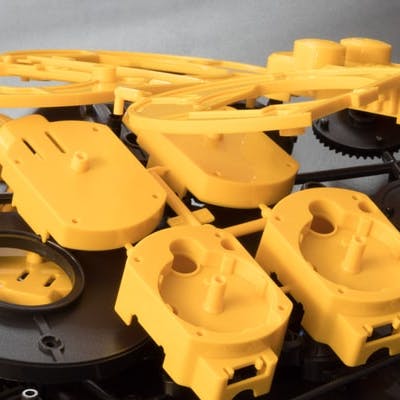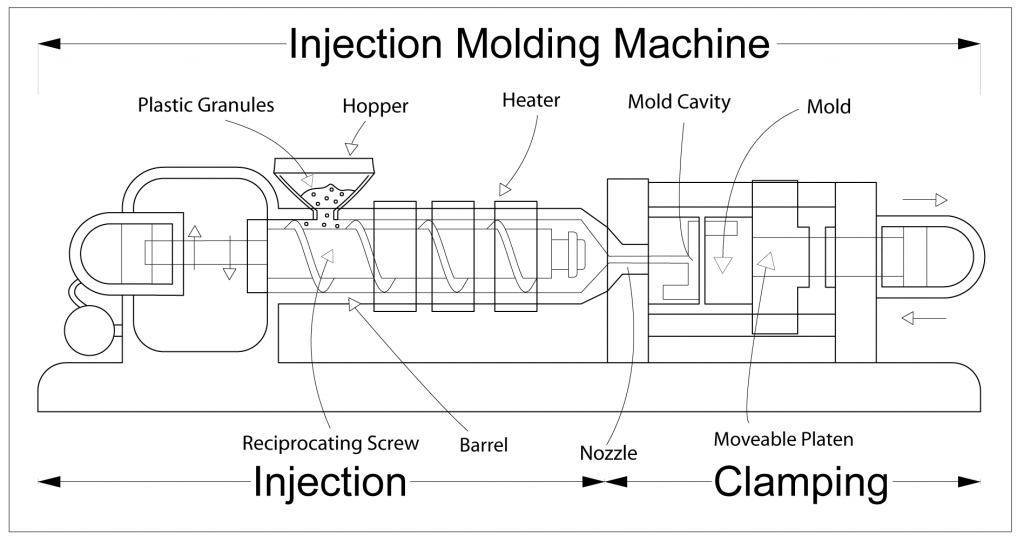Understanding the Fundamentals of Plastic Injection Molding Processes
Plastic shot molding serves as a cornerstone of modern production, supplying a methodical method to producing complicated elements with accuracy. Discovering these crucial elements can reveal how even minor changes can lead to considerable improvements in manufacturing end results, increasing questions concerning the capacity for development in this established procedure.
What Is Plastic Injection Molding?
Plastic injection molding is an extensively used production process that changes thermoplastic and thermosetting products into exact and complex shapes. This strategy is favored for its capability to generate high volumes of similar get rid of outstanding accuracy, making it an important approach in various markets, consisting of automotive, consumer products, and clinical devices.
The process includes melting the picked plastic material and injecting it into a mold and mildew under high stress. The mold, developed to the specs of the wanted part, enables the molten plastic to form as it strengthens and cools down. As soon as the material has hardened, the mold is opened, and the ended up part is expelled.
Plastic shot molding supplies several advantages, including decreased waste, uniformity in production, and the ability to integrate detailed layouts that might be testing with various other making approaches. In addition, it sustains a wide array of products, each giving unique residential properties that can be customized for certain applications. As markets remain to innovate, plastic injection molding remains at the forefront, enabling the development of innovative items that satisfy developing consumer demands.
The Shot Molding Refine
The injection molding procedure is an innovative strategy that includes several key phases to generate top notch plastic elements. Initially, plastic pellets are fed into a warmed barrel where they are merged a thick fluid. This molten plastic is after that infused under high pressure into a precision-engineered mold and mildew, which shapes the material right into the preferred form.
As soon as the mold is filled, the plastic is permitted to cool and strengthen, taking the form of the mold dental caries. Cooling time is essential, as it affects the cycle time and the last residential properties of the molded component. After sufficient air conditioning, the mold opens up, and the finished part is ejected making use of ejector pins.

Products Utilized in Injection Molding
Numerous products can be made use of in the shot molding procedure, each offering distinct buildings that deal with certain applications. The most generally used products consist of thermoplastics, thermosetting plastics, and elastomers.

Thermosetting plastics, like epoxy and phenolic materials, undertake a chemical adjustment during the curing procedure, leading to an inflexible, stringent structure. These products are ideal for applications needing high warm resistance and architectural honesty, commonly made use of in automotive components and electrical insulators.
Elastomers, consisting of silicone and rubber-based products, provide versatility and strength. Their one-of-a-kind properties make them ideal for applications that demand flexibility, such as seals and gaskets.
Furthermore, specialty products like bio-based plastics and composites are acquiring grip for their ecological advantages and improved performance characteristics, expanding the scope of injection molding applications in different industries. Understanding the buildings of these materials is crucial for selecting the appropriate type for specific jobs.
Advantages of Shot Molding
Shot molding stands out as a highly reliable production procedure that uses many benefits for creating complex parts with precision. Among one of the most considerable benefits is the ability to develop detailed styles that would be difficult or difficult to achieve with other approaches (Plastic my sources Injection Molding). The process permits detailed functions and tight resistances, making certain top notch parts
Furthermore, shot molding is known for its quick production capabilities, making it an ideal selection for high-volume manufacturing. Once the mold and mildew is created, components can be created quickly, lowering lead times and raising general productivity. This performance not only decreases production expenses but likewise provides an affordable side out there.
The versatility of products used in injection molding better improves its allure. A large range of thermoplastics and thermosetting polymers can be employed, enabling suppliers to select products that ideal satisfy their details demands, consisting of strength, versatility, and warmth resistance.
Moreover, the process reduces waste, as excess product can often be recycled and reused. This sustainability element adds to a lowered environmental impact, making shot molding an see this website accountable production choice. Generally, the benefits of shot molding make it a recommended approach for many industries.
Elements Impacting Item High Quality
While many factors can influence product high quality in injection molding, comprehending these aspects is vital for attaining optimum outcomes. Trick facets consist of product choice, processing specifications, and mold design.
Material selection plays a vital role, as various polymers show one-of-a-kind properties that affect flowability, toughness, and thermal stability. Inadequate material selection can bring about issues such as bending or incomplete filling.
Handling criteria, consisting of cycle, stress, and temperature time, must be diligently managed. Variations in these setups can lead to disparities partly measurements and surface finish. As an example, exceedingly heats may trigger deterioration of the polymer, while inadequate stress can lead to short shots.
Mold and mildew design is just as essential, as it determines the circulation of the molten plastic and the cooling process. Inadequately developed mold and mildews may bring about unequal air conditioning rates, causing dimensional errors and residual stress and anxieties.

Verdict
Finally, plastic shot molding works as an important production process that allows the read efficient production of high-quality components. Proficiency of the shot molding procedure, consisting of the understanding of materials and the influence of numerous aspects on product high quality, is essential for attaining optimal outcomes. The benefits of this approach, such as cost-effectiveness and style versatility, more emphasize its relevance throughout multiple sectors, solidifying its status as a recommended choice for high-volume manufacturing.
Plastic injection molding serves as a cornerstone of modern-day manufacturing, supplying a methodical strategy to creating intricate components with precision.Plastic injection molding uses several benefits, including lowered waste, consistency in production, and the capability to incorporate elaborate layouts that may be challenging with other manufacturing approaches (Plastic Injection Molding). As sectors continue to innovate, plastic injection molding stays at the center, making it possible for the advancement of sophisticated items that meet progressing customer needs
The injection molding procedure is a sophisticated method that involves a number of key phases to produce premium plastic components.In verdict, plastic injection molding offers as an important manufacturing process that enables the efficient manufacturing of high-grade parts.